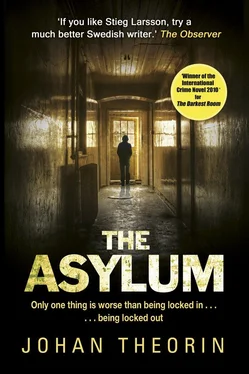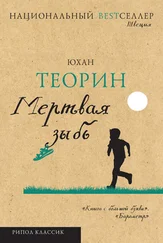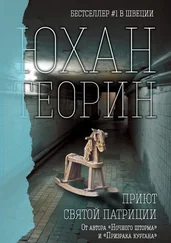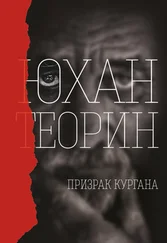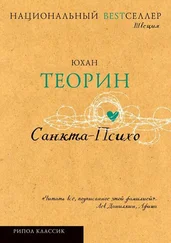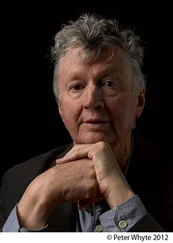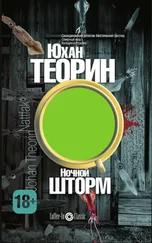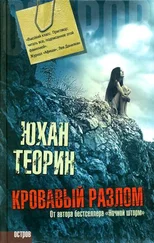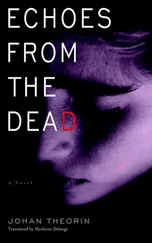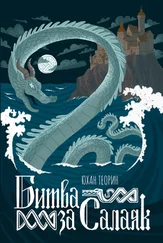‘Unfortunately you’ve missed our feelgood session today,’ says Marie-Louise when she has finished showing Jan around.
‘What’s that?’
‘It’s something we do together as a team on Mondays. We just sit down for fifteen minutes and talk about how we’re feeling.’ She smiles at him. ‘But you’ll get the chance to join in next Monday.’
Jan nods without saying anything. He doesn’t want to think about how he’s feeling.
‘So,’ says Marie-Louise, ‘are you ready to start work?’
‘Absolutely.’
‘Good.’ She smiles again. ‘I was thinking we might have story time.’
Jan has the honour of choosing a book from the boxes in the playroom, and he pulls out a slender volume from somewhere in the middle: Emil in the Soup Tureen .
‘Story time!’
Jan sits down on a chair by the wall in the playroom, and the children stop playing and settle down on little stools in a higgledy-piggledy semi-circle. They are curious about him, but still quite wary. He understands them.
‘OK, do you remember my name?’
No one speaks.
‘Does anyone remember?’
The children stare at him in silence.
Eventually a little girl with only one front tooth whispers, ‘Jan.’
She is sitting slightly closer to him than the others. Matilda — that was her name, wasn’t it? She looks about five years old, with a centre parting and long, pale-blonde plaits.
‘That’s it — my name is Jan Hauger.’ He holds up the book. ‘And this is Emil — Emil from Lönneberga. Have you seen him before?’
Several of the children nod; he is starting to connect with them.
‘Have you heard the story about the time when Emil got his head stuck in the soup tureen?’
‘Yeees...’
‘Have you heard it lots of times?’
‘Yesss!’
‘Oh, so maybe you don’t want to hear it again?’
‘Yes we do!’ they shout.
Jan smiles at them. All your troubles disappear when you look into the eyes of a child. They absorb all the light in the world, and it shines out of them. He opens the book and begins to read.
The morning passes. Routines are important at the Dell. Marie-Louise seems to want as much order as possible, and the children feel the same. After story time everyone goes out to play. The children put on their coats and boots and go out into the playground, inside the metre-high fence. Almost half the group want to play tag, and Jan has to chase them. The last trace of shyness disappears, and they scream with fear and excitement as he chases them around the sandpit and the playhouse. The playground is not large, but it is very green; shrubs and grass are still growing in the mild autumn weather, and there is no tarmac and hardly any gravel in sight.
Jan can now see the hospital complex from a new angle. There is no wall at the back of St Patricia’s, just a five-metre chain-link fence with a network of electrified wires right at the top.
‘Chase me! Chase me!’
Jan carries on playing. He raises his arms like a real monster, chasing all the children who want to be chased. They hide behind the playhouse, and he creeps around pretending he can’t find them — until he suddenly rounds the corner and bellows like a troll, ‘Boo!’
It’s fun; he is just as happy out here as in the playroom, but suddenly he turns to look towards the hospital — and realizes that someone is standing there staring.
Jan stops dead, and his smile disappears.
A tall, thin old woman is standing behind St Patricia’s fence, dressed in a black coat. Skinny white legs are visible below the coat. She has a rake in one hand, and there is a pile of leaves at her feet. The other hand is clutching the mesh of the fence.
The woman is staring straight at Jan. Her face is pale, but her eyes are almost as dark as her clothes. Her expression is filled with sorrow, or perhaps hatred — it’s impossible to tell.
‘Jan?’
He gives a start and turns around; Marie-Louise is calling to him from an open window.
‘Yes?’
‘It’s almost time for Leo to go over to the hospital; I thought you could come with me so that you can see what we do. Would you like to do that?’
‘Yes, of course.’
Jan nods to her. Marie-Louise closes the window, and he glances over at the hospital again. But the woman behind the fence has disappeared. Only the pile of leaves remains.
The routines continue. The children come inside, take off their coats and boots and go straight to the playroom, where they sit down with a variety of games. Jan has always been fascinated by how disciplined small children can be when they know what they are supposed to do.
When everyone is settled, Marie-Louise looks at the clock. ‘Time to go.’
She takes a magnetic key card out of a cupboard in the kitchen and leads the way to the cloakroom.
‘Leo!’ she shouts. ‘Time to go!’
Beside the coat hooks there is a white door that Jan has not noticed up to now — or at least it hasn’t occurred to him to wonder what lies beyond it.
Marie-Louise swipes the card and keys in a four-digit code, three — one — zero — seven, and the white door opens. ‘My birthday,’ she says. ‘July thirty-first.’
Jan can see a steep stone staircase beyond the door. Marie-Louise switches on the light and turns around, holding out her hand and smiling. ‘Right then, Leo — shall we go and see Daddy?’
Leo hasn’t been playing outside. He is barely five years old; a slight child with skinny legs, dressed in little blue dungarees. He takes Marie-Louise’s hand and walks down the stairs with her, one step at a time. Jan follows in silence.
‘Could you close the door, Jan?’
The shouts and joyful laughter from the pre-school are cut off abruptly. The staircase is as silent as the grave. The walls seem to be made of the same material as the wall surrounding the hospital; any sound is muted down here.
Leo’s little legs plod on down the stairs. Marie-Louise doesn’t speak either; there is a palpable seriousness in the air.
After twenty steps they reach the basement level, and set off along an underground corridor with a concrete floor which is covered in a thin blue carpet. But someone has spent time trying to make the corridor look pleasant: the walls are painted a sunny yellow, and adorned with brightly coloured pictures.
Jan sees that they are pen and ink drawings. He couldn’t have drawn them — they are too cheerful. Laughing mice swimming in a pool, elephants smoking great big pipes, walruses playing tennis.
It feels as if the animals are in the wrong place down here.
‘Here we are,’ Marie-Louise says all of a sudden. ‘We’ve arrived, Leo!’
They have walked some fifty metres and are deep underground now, presumably beneath the hospital itself. To the right there is a white-painted lift door with a narrow pane of glass. But the corridor does not end here; it continues straight on for another eight or ten metres, then turns sharply to the right.
Marie-Louise opens the door of the lift for Leo, and he toddles inside.
Jan also takes a step forward, but she shakes her head. ‘Leo wants to go up on his own,’ she says. ‘The children are allowed to do that if they want to.’
Jan nods. He feels tense, but he had hoped to get as far as the visitors’ room. ‘But we do go up with the children sometimes?’
‘Oh yes,’ says Marie-Louise. ‘You and the child make that decision together.’
When the door is open Jan catches a brief glimpse of the lift. He sees a small metal chamber with two buttons marked UP and DOWN, next to another card reader and a red panic button. CCTV cameras? He can’t see any on the walls or ceiling.
Marie-Louise steps into the lift, swipes her magnetic card and presses the button marked UP. ‘Bye then, Leo!’ she shouts as she closes the door. ‘See you soon!’ Her voice sounds even more exuberant than usual, as if she is trying to chase away a sudden twinge of unease.
Читать дальше
